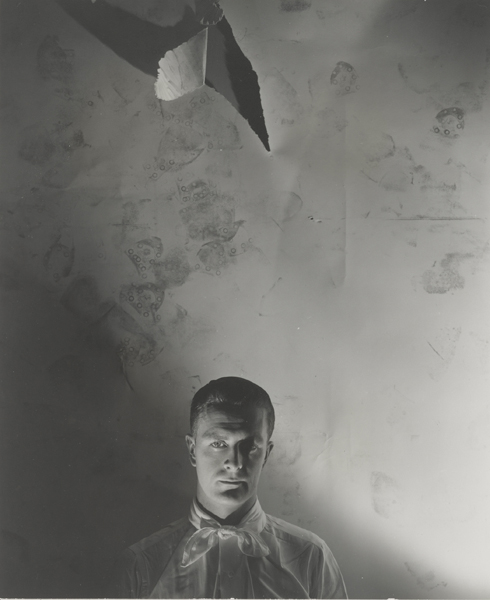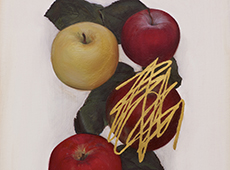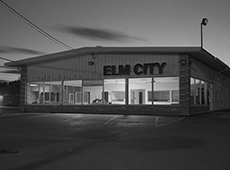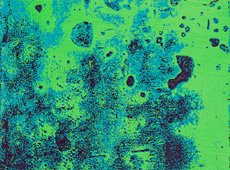“…a space opened up behind that paper, a space—who knows how wide—between the paper and the wall, inaccessible but hinted at by the tear. It occurred to me that this photograph was…”
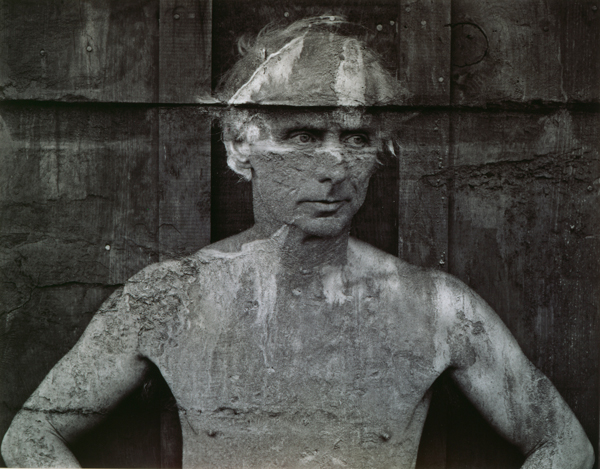
Frederick Sommer, “Max Ernst, 1946.” 1946. Gelatin silver print.
© Frederick & Frances Sommer Foundation.
Image courtesy of Bowdoin College Museum of Art, Brunswick, Maine.
Under the Surface: Surrealist Photography
28 February – 1 June ’14
Bowdoin College Museum of Art
245 Maine Street
Brunswick, ME 04011
207.725.3275 / artmuseum@bowdoin.edu
Surrealism, as a bona fide, card-issuing movement, was short-lived in years and far-reaching in effect. We see it in Gorky’s disjunctive forms and, by extension, we see it in de Kooning. We see it in Pollock and Motherwell‘s insistence on the automatic mark. We see it so much in the recent art history of painting that we forget that Surrealism’s first start was in literature, and how it took hold of sculpture and photography early on. Never mind theater, music and dance.
There are reasons. There’s the Abstract Expressionist push to turn the interior life outward–how this vibed so well with Surrealism’s primary conviction: to tap the unconscious and use it to see past the observable, rational world. There’s also the immediacy of the painter’s mark, made possible, in turn, by the immediacy of paint–how it can be worked without recourse to, say, hardware (sculpture) or chemistry (photography).
That the material stuff of paint encouraged the unselfconscious mark not only bolstered painting’s already privileged position in the larger telling of recent art history, it also pushed it toward center stage when the curtain opened on Surrealism’s part of that story. There’s seemingly no other way to tell it: painting was there from the movement’s get-go, and its immediacy and materiality gave painters like Miró, Masson, Picasso and Picabia what they needed to make art that was, per Andre Breton in the movement’s manifesto, “dictated by thought, in the absence of…reason, exempt from any aesthetic or moral concern.” But photography, say, which was also there from the start, not so much.
…
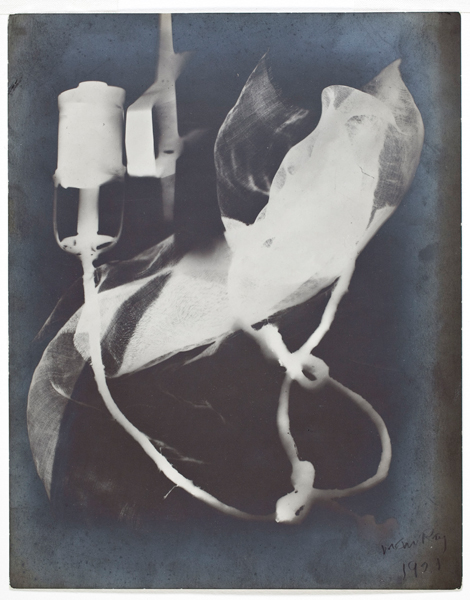
Man Ray, “Untitled.” 1921. Gelatin silver print.
© 2014 Man Ray Trust / Artists Rights Society (ARS), NY / ADAGP, Paris.
Image courtesy of Bowdoin College Museum of Art, Brunswick, Maine.
…
Under the Surface: Surrealist Photography, now on view at the Bowdoin College Museum of Art, reconsiders photography’s role in the Surrealist project. And it does it in part–and unexpectedly–by highlighting that thing you might think runs counter to the whole of Surrealist doctrine: photography’s indexical nature, its ability to make an accurate record of the physical world.
Better than sixty photographs help make the case that, playing against the viewer’s expectation of photography’s truth claim, artists could make pictures that upend our trust in the knowable world. These pictures ask us to look inward, not outward. That the show includes A-list photographers whose works are better-known outside the Surrealist canon (Abbott, Atget and Cartier-Bresson), and that it covers all the classical photographic genres (portraiture, still life, street photography, the nude) helps to sell the story: it’s method, not medium, that gets us to look twice. For the photographers featured in Under the Surface, that method is layering, which not only activates the plane through a confusion of visual incident, but also activates the viewer, asking her to find meaning by peeling away those layers.
Bowdoin’s choice to reach beyond the typical exploration of Moholy-Nagy-type photograms and Man Ray-like solarized prints, and instead broaden the conversation with photographs widely considered as “straight” or “documentary,” is welcome and needed. It’s especially gratifying to see portraiture included here, since so many photographers since Arbus seem to have forgotten about the portrait’s psychological punch and instead give us what the New Yorker’s Adam Gopnik once called (glowingly, with due respect to Richard Avedon) “studies in human performance.”
I asked Bowdoin’s Andrea Rosen, who curated Under the Surface, about George Platt Lynes’ Portrait of Thomas Bacon (1938).
George Platt Lynes, “Portrait of Thomas Bacon.” ca. 1938. Gelatin silver print.
© Estate of George Platt Lynes.
Image courtesy of Bowdoin College Museum of Art, Brunswick, Maine.
…a space opened up behind that paper, a space—who knows how wide—between the paper and the wall, inaccessible but hinted at by the tear. It occurred to me that this photograph was built up of discrete layers: the wall, the space, the paper, the marks, and so on. Even the gelatin silver print itself is made of layers…
Under the Surface: Surrealist Photography runs through 1 June at the Bowdoin College Museum of Art, Brunswick, ME. (207.725.3275 / artmuseum@bowdoin.edu)
Surrealism in Motion, an installation of films selected by the college’s museum staff and students runs concurrent with the exhibition.
Editor’s Recs:
Film screening and discussion: ‘Science is Fiction’: A Selection of Films by Jean Painleve Speakers include: Sarah Childress, Visiting Assistant Professor of Film Studies; Janet Gannon, laboratory instructor of biology at Bowdoin College; Marko Melendy, Animal Care Supervisor, Coastal Studies Center at Bowdoin College; Andrea Rosen, Curatorial Assistant, Bowdoin College Museum of Art; and students in the Spring 2014 course The Reality Effect: Documentary Film. 3 March | 6:00pm Information: 207.725.3275.
Join Jessica May, Curator of Modern and Contemporary Art, Portland Museum of Art and Andrea Rosen, curatorial assistant and curator of Under the Surface: Surrealist Photography, for an informal gallery talk. 1 May | 4:30pm. Information: 207.725.3275.
Read Andre Breton on Surrealism and the visual arts: Le Surréalisme et la peinture (Paris: Gallimard, 1928), excerpted here from Theories of Modern Art. (Berkeley: University of California Press, 1984.) Fair Use guidelines apply.
Note:
This marks our last exhibition-specific post. Changes are underway here at Tilted Arc. Coming in March: deeper conversations, more probing interviews, more on process, and essays that will knock your socks off. Plus, a new look. Stay tuned.
Subscribe to Tilted Arc
If you like this story, please consider subscribing. We are sticklers for privacy.
We will never sell or share your e-mail address.

